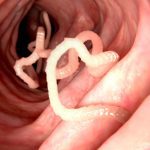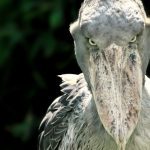 Mysteries
Mysteries  Mysteries
Mysteries  History
History 10 Surprising Stories About the Texas Rangers
 Humans
Humans 10 Philosophers Who Were Driven Mad by Their Own Theories
 Miscellaneous
Miscellaneous 10 Video-Game-Worthy Weapons and Armors from History
 Weird Stuff
Weird Stuff 10 Psychics Who Accurately Predicted Wartime Events
 The Arts
The Arts 10 Pieces of Art Inspired by a Broken Heart
 Health
Health 10 Science Fiction-Sounding New Medical Treatments
 History
History 10 Surprising Facts About the Father of Submarine Warfare
 Space
Space Ten Astonishing New Insights into Alien Worlds
 Weird Stuff
Weird Stuff 10 Bizarre Summer Solstice Rituals Still Practiced Today
 Mysteries
Mysteries Top 10 Haunting Facts About the Ghost Ship MV Alta
 History
History 10 Surprising Stories About the Texas Rangers
 Humans
Humans 10 Philosophers Who Were Driven Mad by Their Own Theories
Who's Behind Listverse?

Jamie Frater
Head Editor
Jamie founded Listverse due to an insatiable desire to share fascinating, obscure, and bizarre facts. He has been a guest speaker on numerous national radio and television stations and is a five time published author.
More About Us Miscellaneous
Miscellaneous 10 Video-Game-Worthy Weapons and Armors from History
 Weird Stuff
Weird Stuff 10 Psychics Who Accurately Predicted Wartime Events
 The Arts
The Arts 10 Pieces of Art Inspired by a Broken Heart
 Health
Health 10 Science Fiction-Sounding New Medical Treatments
 History
History 10 Surprising Facts About the Father of Submarine Warfare
 Space
Space Ten Astonishing New Insights into Alien Worlds
 Weird Stuff
Weird Stuff 10 Bizarre Summer Solstice Rituals Still Practiced Today
10 Surprising Ways Technology Is Preserving Endangered Species
Conservationist groups are getting pretty high-tech in the fight to save endangered animals. And we are here for it! No matter where they fall on the risk scale, from threatened to vulnerable or critically endangered, organizations are fighting to keep these beloved animals on our planet for as long as possible.
We’re able to do so much more to help with the right tools at our fingertips. Today, we’re going to uncover ten surprising ways in which technology is playing a pivotal role in preserving endangered species. You might be surprised to learn how drones, AI, and even your smartphone can become heroes in the fight against extinction.
Related: 10 Modern Technologies That Almost Turned Out Differently
10 Wildlife Tracking with GPS Collars
GPS collars fit snugly around the necks of animals on the watch list. This technology is a game-changer in the world of wildlife conservation. These collars aren’t just fancy accessories. They’re vital tools that help scientists track the movements of endangered animals with remarkable precision.
Researchers can make well-informed decisions by collecting data on these creatures’ daily routines, migratory patterns, and breeding grounds. It’s like having wildlife GPS guiding us to understand and protect critical habitats, reduce human-wildlife conflicts, and pinpoint areas vulnerable to poaching. In fact, researchers have developed a GPS wildlife tracking collar that powers itself as animals roam, which could help monitor animals across their entire lifespans.
One remarkable example of this technology in action is the African elephant. GPS collars have allowed experts to monitor their extensive migrations, uncovering previously unknown corridors that need protection. They also help us develop effective conservation strategies to help the survival of these incredible species. The collars can help
9 Guarding the Sea and Sky with Drones
Have you ever dreamed of having a bird’s-eye view of the world? Well, drones are helping us live that dream. Armed with cameras and infrared technology, drones have become indispensable for monitoring remote and inaccessible areas.
Drones make it possible to track animals without disturbing their solitude. They count populations, spot poachers from above, and even drop essential supplies to field teams. They can also send drones underwater. The SnotBot is one drone scientists use to gather biological specimens from whales and dolphins. It can literally collect their boogers in a petri dish to analyze them.
Drones are also being used to monitor forest fires, which constitute a significant threat to endangered animals. In Brazil, drones are used to locate rare monkeys in a vast jungle to ensure that people don’t set fires near them for land clearing.
And we can’t forget about the stunning images and wildlife videos drones can capture. This material helps to engage the public and raise awareness about endangered species and the importance of conservation.
8 Wildlife Detection with AI-Powered Image Recognition
Searching for endangered species in landscapes is like finding a needle in a haystack, but AI-powered image recognition makes it feel more like a walk in the park. Using sophisticated algorithms, researchers can sift through thousands of trail camera photos, satellite images, or social media posts to identify and track elusive species.
Consider the snow leopard, which teeters between endangered and vulnerable. It prowls the high mountains of Central Asia. Experts can analyze camera trap photos with AI to determine their population numbers, distribution, and behavior patterns. This insight helps tailor conservation strategies to protect their habitats.
In August 2021, an open-source platform called Wildbook analyzed 17 million images automatically using AI-driven image recognition to count how many animals are in the image, as well as where it was taken and when—which could contribute to metrics like population counts
AI isn’t restricted to terrestrial ecosystems. It’s making waves underwater, too. In coral reef conservation, AI algorithms can analyze thousands of underwater images, identifying specific coral species and monitoring their health. This technology is like having an army of digital detectives tirelessly working to safeguard the biodiversity of our oceans and landscapes.
7 Blockchain for Transparent Conservation
In a world where transparency is often elusive, blockchain technology is a trusty sidekick for wildlife conservation. Beyond its association with cryptocurrencies, blockchain is a powerful tool to ensure every conservation dollar is spent wisely.
Conservation organizations can record and verify transactions on a blockchain, providing donors with transparency. This builds trust and reduces the risk of funds being siphoned off through corruption or mismanagement.
An example is the protection of rhinos from poaching. Using blockchain, some conservationists are advocating for tracked legal sales, leaving no room for illegal trade. Meanwhile, in places like South Africa, they are creating Rhino Horn NFTs as a replacement for the actual horns. As of 2021, one major reserve reported that it had gone four years without a poaching incident because of these efforts. They sell the NFTs to represent and track actual horn sales that fund conservation efforts. Blockchain tech can ensure that funds reach the front lines of the battle against extinction.
6 Smartphones as Conservation Tools
Your smartphone, that pocket-sized technology powerhouse, can be a wildlife warrior. Numerous apps allow you to contribute effortlessly to wildlife preservation. For instance, iNaturalist lets you document and share wildlife sightings, contributing to valuable data on species distribution.
Apps can also help combat wildlife trafficking. Wild Watch is one that enables users to report suspicious activity, helping authorities crack down on illegal trade. In the grand scheme of conservation, your smartphone becomes more than just a way to play Candy Crush. It’s a bridge connecting you to the natural world.
Your smartphone can also be an educational tool. Apps like Seek and PlantSnap help users learn about local flora and fauna. Using such apps fosters a deeper appreciation for the biodiversity around us. So the next time you’re out, remember that your smartphone can turn you into a citizen scientist and a conservationist. The more you know, the more you can do to help these species.
5 Saving Species, One DNA Strand at a Time
Conservation is about more than just protecting animals in their natural habitats. Sometimes, it’s about safeguarding their genetic diversity. Genetic technologies like in vitro fertilization (IVF) and cryopreservation are critical for preserving endangered species.
Thanks to IVF using stored genetic material, scientists have successfully created embryos. Doing so offers hope for the species’ survival. It’s akin to a genetic safety net, allowing us to revive dwindling populations when all hope seems lost.
Cryopreservation, on the other hand, involves freezing genetic material like eggs, sperm, or embryos. Cryopreservation has been used to preserve the genetic material of various animal species, including mammals, birds, reptiles, and amphibians. Scientists can then thaw these items to produce offspring even if the last living individual of a species dies. These technologies are the modern-day Noah’s Ark, preserving life for future generations.
4 Acoustic Monitoring to Eavesdrop on Nature
Acoustic monitoring technology deploys audio recording devices in remote areas, capturing the sounds produced by wildlife. What are some of its best qualities? It’s non-evasive and cost effective. This makes it a fantastic investment for conservationists to collect large amounts of data.
Think for a second about how the dense Amazon rainforest comes alive at night with the calls of frogs, insects, and nocturnal birds. Acoustic monitoring allows scientists to decipher these audio clues. They reveal the presence of species that are otherwise challenging to spot. It transmits valuable intelligence about ecosystems’ health and species’ behavior.
In marine conservation, hydrophones submerged in the ocean can detect the songs of humpback whales. Researchers gain insights into the whales’ movements and communication patterns by analyzing these recordings. Acoustic monitoring is opening a window into nature, helping us better understand and protect it.
3 Anti-Poaching Software Takes a Stand
A software known as PAWS (Protection Assistant for Wildlife Security) is leading the charge to protect endangered animals from poaching. PAWS analyses poaching data from the past along with geographical information to predict poaching behaviors. It can design maps and patrol routes conservation teams can follow to protect endangered species.
They first tested this technology in Cambodia at the Srepok Wildlife Sanctuary. They were able to reintegrate tigers into the area while using PAWS to check for snares and signs of poaching. The organization is rolling out these efforts to preserves and national parks worldwide to help eradicate this illegal activity.
2 3D Printing Offers a Helping Hand
Consider an injured sea turtle struggling to swim with a missing flipper or a rhino whose horn has been damaged. Enter 3D printing, offering a lifeline to these animals with customized prosthetics.
These innovative prosthetics are crafted with 3D printers, allowing animals to regain mobility and improve their quality of life. For instance, an injured sea turtle fitted with a 3D-printed flipper can glide gracefully through the ocean again. It’s akin to equipping nature with high-tech crutches, ensuring that animals injured by human activities can still thrive in their natural habitats.
One Costa Rican toucan named Grecia lost half of her beak after a human attack. With her new 3D-printed beak prosthetic, she can live a relatively normal life in the jungle. And there’s a group called the Shellter Project that encourages 3D printers to help create custom shells for hermit crabs.
These prosthetics can be tailored to each individual’s needs, ensuring a perfect fit. This customization is crucial for animals, allowing them to move, eat, and interact with their environment as if they had never been injured. 3D printing is breathing new life into the conservation world, offering hope and healing to our animal friends. While these printed prosthetics are expensive right now, we’ve only just begun to tap into the potential within this field.
1 Conservation Databases: Knowledge Is Power
In the digital age, information is the currency of conservation. Conservation databases are like the vaults of wisdom, storing vast amounts of data on species populations, habitat changes, and ecological trends.
These databases serve as invaluable resources for scientists and conservationists. They provide a treasure trove of information that guides conservation strategies, helps prioritize efforts, and informs policy decisions. It’s like having a global encyclopedia of the natural world at our fingertips, offering insights that shape our approach to protecting endangered species.
For instance, databases like the IUCN Red List categorize the conservation status of thousands of species worldwide. It helps us identify which species are most at risk and need immediate attention. Conservation databases are the compasses that steer us toward a future where endangered species thrive once more.








